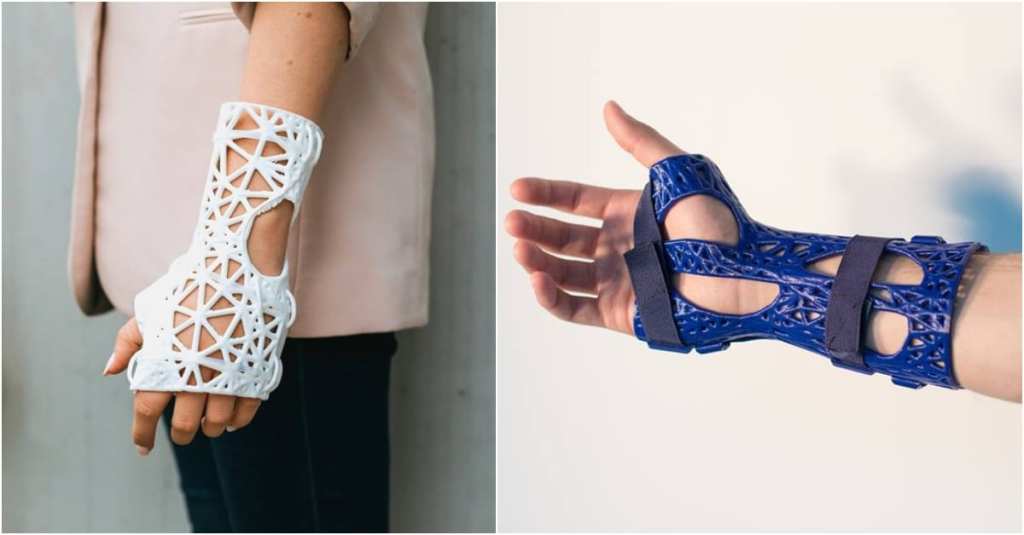If you’ve ever broken a bone before, you know that the long recovery in a heavy, clunky cast in extremely uncomfortable.
But two entrepreneurs from Latvia might have changed the game in a great way. Sigvards Krongorns and Janis Olins launched their startup company Castprint to improve the comfort of modern casts. The company uses 3D printing to build personalized, lightweight casts out of plastic. They utilize a web-like composition that helps stabilize and support broken bones.
The casts are designed to be comfortable (what a revelation that would be), and they can easily be taken on and off, which means people can start rehabilitation earlier if they need to instead of having to wait for a traditional plaster cast to be cut off.
Another plus: people can wear Castprint casts in the water, so swimming is still an option and showering doesn’t have to involve the hassle of taping a plastic bag around your arm or leg.
The idea for the company came when co-founder Janis Olins broke his elbow and found his injury interfered with his regular job as an auditor. None of his suits would fit over his cast, and he couldn’t go meet clients in person. In 2016 (while still in his cast), Olins was growing interested in 3D printing technology, so he and his partner Krongorns began working with a designer to come up with a potential prototype for a 3D printable cast.
Olins said, “We interviewed doctors, clinic management, nurses, insurance companies and regulator representatives in order to find out more about fracture treatment and the processes involved.”
CastPrint now has partnerships with 7 clinics in Latvia where personalized casts are made for each patient. Olins said that originally many doctors were skeptical of their product, but as time went on and they saw how successful the casts were, they’ve gotten on board.
Olins and Krongorns are looking to expand past Latvia, and their first international partners are in Finland.
Olins added, “We envision, and hope, that with our work we can bring healthcare services and 3D printing technology closer together. Because of the simplicity and ease of our service, there is more potential, and we can fundamentally change the way fracture injuries are treated in the world.”






